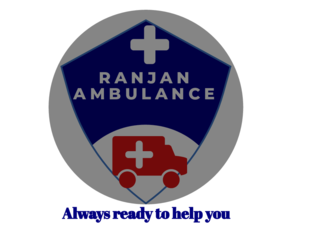
Ambulance Service in Kaimur: Ensuring Timely Medical Assistance
In the sprawling district of Kaimur, Bihar, the provision of ambulance services plays a critical role in ensuring timely medical assistance to its residents. Situated in the southwestern part of the state, Kaimur faces numerous challenges typical of rural areas in India, including access to healthcare services. The ambulance service here stands as a vital link between remote communities and healthcare facilities, significantly impacting the region’s healthcare outcomes.
Healthcare Landscape in Kaimur
Kaimur district, with its predominantly rural population, often grapples with infrastructural deficiencies and limited access to healthcare facilities. The district comprises several blocks and villages spread across a vast area, making it challenging for residents, especially in remote areas, to reach medical facilities quickly in case of emergencies. This geographical dispersion underscores the importance of a robust ambulance service that can traverse varying terrains and provide timely medical transport.
Role of Ambulance Services
The ambulance service in Kaimur serves multiple purposes:
Emergency Response: Ambulances are crucial for responding to medical emergencies such as accidents, childbirth complications, cardiac arrests, and other critical situations where immediate medical attention is necessary.
Patient Transport: Beyond emergencies, ambulances facilitate the transport of patients requiring medical care between hospitals, clinics, and their homes. This service is particularly essential for patients with chronic illnesses or those needing specialized treatment not available locally.
Community Outreach: Ambulance services also contribute to community health awareness by conducting health camps, providing first aid training, and educating residents on emergency preparedness.
Challenges Faced
Despite its importance, the ambulance service in Kaimur faces several challenges:
Infrastructure and Connectivity: Many areas in Kaimur lack well-maintained roads and basic infrastructure, making it difficult for ambulances to reach remote villages during monsoons or adverse weather conditions.
Resource Allocation: Limited financial resources often constrain the availability of ambulances and necessary medical equipment in the district.
Awareness and Accessibility: Awareness about when and how to use ambulance services remains low in some communities, leading to delays in seeking medical help during emergencies.
Government Initiatives and Interventions
To address these challenges and improve healthcare accessibility, the government has undertaken several initiatives:
Janani Express Yojana: This initiative focuses on providing transportation facilities, including ambulances, for pregnant women to ensure safe deliveries and reduce maternal mortality.
108 Emergency Ambulance Service: Operated under a public-private partnership (PPP) model, this service aims to provide free emergency ambulance services across the state, including Kaimur district.
Mobile Medical Units (MMUs): These units travel to remote areas, providing basic healthcare services and emergency medical care to underserved communities.
Impact on Healthcare Outcomes
The ambulance service has had a profound impact on healthcare outcomes in Kaimur:
Reduced Mortality Rates: Timely access to emergency medical care has significantly reduced mortality rates, especially in cases of accidents and childbirth complications.
Improved Access to Healthcare: Residents now have better access to healthcare facilities, ensuring that they receive treatment promptly without having to travel long distances on their own.
Health Education and Awareness: Through community outreach programs, the ambulance service has raised awareness about preventive healthcare measures and early intervention, thereby improving overall health indicators in the district.
Community Perspectives
Local residents and healthcare providers acknowledge the critical role of ambulance services:
Sarita Devi, a resident of Chainpur village, recounts how the ambulance service saved her brother’s life after a severe accident.
Dr. Rajesh Kumar, a local physician, emphasizes the importance of timely medical transport in managing emergencies and reducing complications.
Future Directions
Looking ahead, several areas require attention to further enhance ambulance services in Kaimur:
Infrastructure Development: Continued investment in road infrastructure and ambulance fleet maintenance is crucial to ensure uninterrupted service delivery.
Capacity Building: Training programs for ambulance staff and community members can enhance emergency response and first aid skills.
Technology Integration: Leveraging technology for real-time tracking of ambulances and improving communication channels can further streamline service delivery.
Conclusion
In conclusion, the ambulance service in Kaimur stands as a lifeline for its residents, bridging the gap between remote communities and healthcare facilities. Despite challenges, concerted efforts by the government and healthcare providers have significantly improved emergency response and healthcare accessibility in the district. As Kaimur continues to develop, ongoing investments and community engagement will be essential in ensuring that ambulance services remain effective and responsive to the needs of its people.
